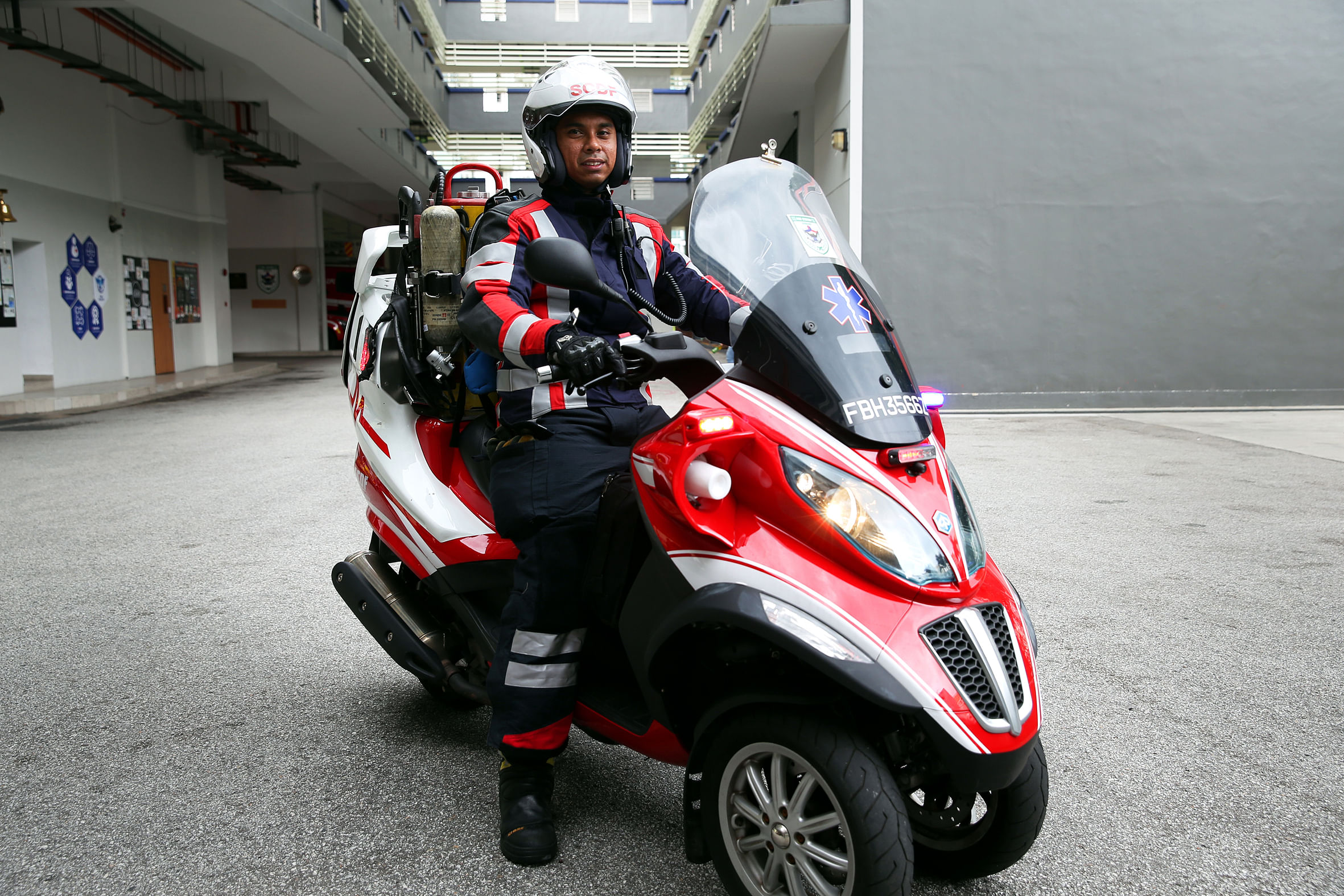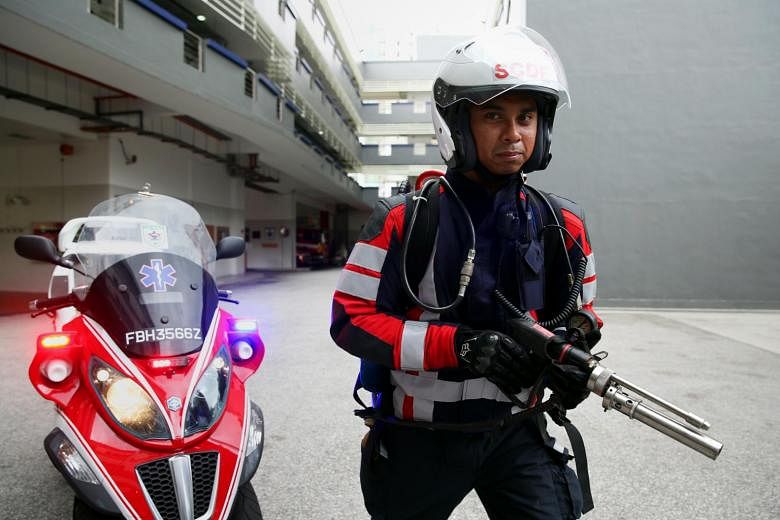SINGAPORE - As a Singapore Civil Defence Force (SCDF) firebiker, he attends to many emergencies and is used to the sight of blood or severe injuries.
But what Staff Sergeant (SSG) Md Hilmi Md Fuad has found hardest to forget is the image of a terrified boy, screaming "help me" repeatedly from behind a padlocked metal gate about three years ago.
SSG Hilmi had been told by residents an eight-year-old boy was inside the smoke-logged fourth-floor unit.
"The boy was alone at home. But the front gate was locked and there was a fire raging in the living room," SSG Hilmi, 31, told The Straits Times recently. " I had to work fast to get him out."
He cut the padlock with a power tool and yanked the boy out before entering the flat to put out the fire in the living room using a 25kg compressed air foam system.
Clearly, first-responders like SSG Hilmi, who regularly put their lives in harm's way to save others, are important. They can get to an incident site quickly on their three-wheel Piaggio scooters .
Since 2013, more than 230 Fire and Rescue Specialists (FRS) have been trained as Emergency Medical Technicians (EMT).

They are proficient in fire-fighting as well as medical emergencies such as cardiac arrest, breathing difficulties or injuries from road traffic accidents.
About 180 of these FRS-EMT personnel are "deployed as firebikers at 30 bases, 24/7", according to the SCDF.
Over two days, this ST reporter was able to watch up close SSG Hilmi's daily routine at Sengkang Fire Station where he has been posted since October 2010.
At the station's emergency vehicle parking bay, a pair of boots with fire-proof pants placed over them seemed out of place next to SSG Hilmi's 400cc scooter. His jacket and motorcycle helmet are arranged neatly on the scooter.
"I need to gear up in less than a minute and head out as quickly as possible," said SSG Hilmi, who is married and has three daughters.
Every minute counts in an emergency. Being first at the scene means that SSG Hilmi is able to relay vital information to the Operations Room at SCDF headquarters.
From April to December last year, FRS-EMTs on fire bikes responded to 12,033 life-threatening cases. They also responded to 1,603 fire and rescue incidents last year.
Key to a victim's survival is the so-called "golden hour" when a person has to be stabilised before being taken to hospital for further medical treatment, said SSG Hilmi.
Each time he is activated, which could be as many as five times in one 24-hour cycle, SSG Hilmi's mind races.
"I have to know if the victim is conscious or not," he said. "I will ask on air if CPR is in progress. I will think of what to do first as I'm riding there."
He has also come across severe injury cases in which the chances of survival are slim.
In one such case last year, SSG Hilmi attended to a rider in his 20s who was bleeding from the nose and mouth following a collision with a car. He had multiple leg fractures and was breathing with difficulty.
"I'm a biker too... his condition just saddens me," said SSG Hilmi. "The least I can do is to give my best before more help arrives."
All firebikers must complete a six-week Emergency Medical Technician course, followed by a two-week firebike course. They must be familiar with how their bikes handle when carrying heavy equipment like the caf system backpack, 15kg forcible-entry tool bag and medical bag.
It is not unusual for SSG Hilmi to climb the stairs carrying the caf system backpack, breathing apparatus and a forcible-entry tool bag when fighting a fire.
Fatigue can easily set in when carrying heavy loads and wearing fire-proof attire, which was what this reporter discovered first-hand.
"You'll get used to the weight and heat," SSG Hilmi said as he began his workout on the cycling machine at the station's gym.

He uses the "down time" to check the equipment on his scooter or do physical exercises.
Just then, an emergency message came over the public address system, prompting a handful of sweaty SCDF personnel to rush out of the gym.
"At least they have their clothes on. Imagine being turned out when you're taking a shower," said SSG Hilmi with a smile.


